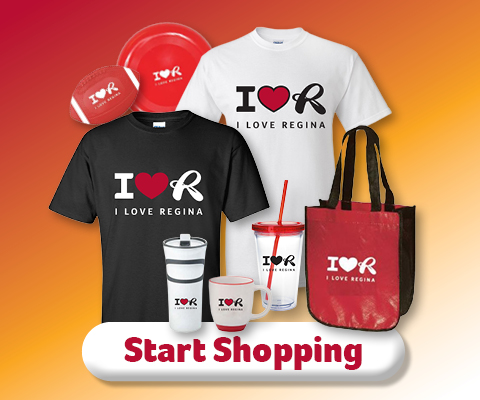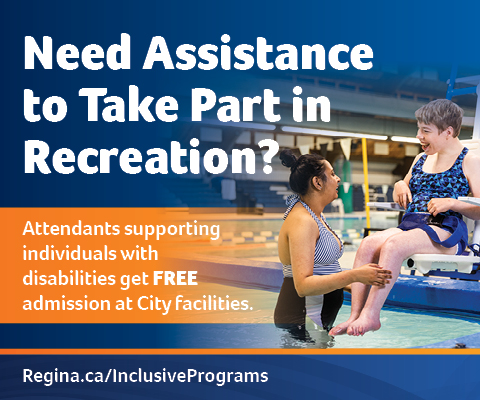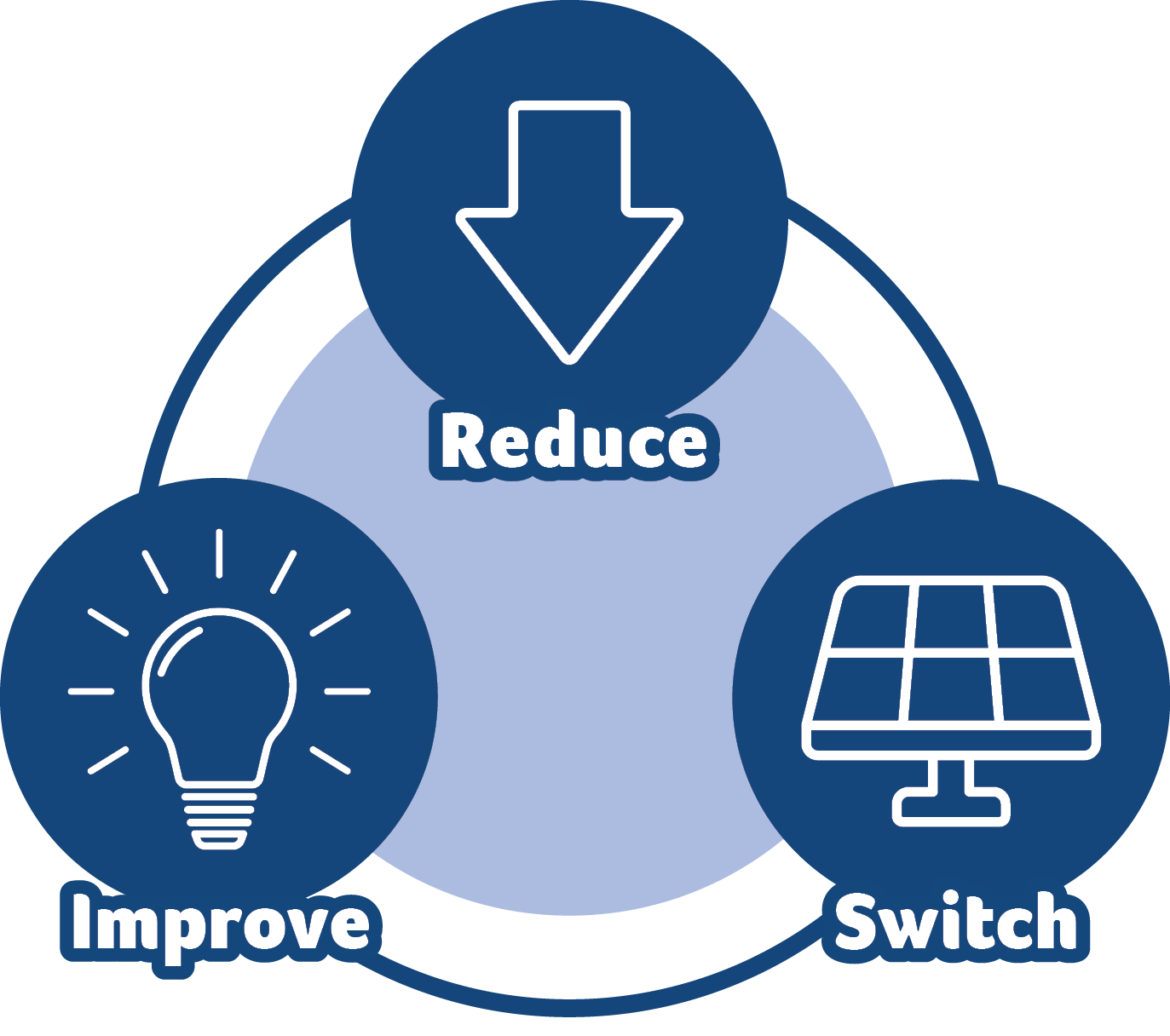 To achieve the 2050 goal, the framework outlines Seven Big Moves. The Big Moves work together and follow the strategy of “Reduce, Improve, Switch”. This involves lowering energy use and increasing energy efficiency before and while switching to renewable energy.
To achieve the 2050 goal, the framework outlines Seven Big Moves. The Big Moves work together and follow the strategy of “Reduce, Improve, Switch”. This involves lowering energy use and increasing energy efficiency before and while switching to renewable energy.
Within the Seven Big Moves, there are 31 actions that would reduce our community’s GHG emissions by 52 per cent and energy use by 24 per cent by 2030. Implementing all 31 would put us on the path to a Renewable Regina by 2050.
Explore each of the Seven Big Moves
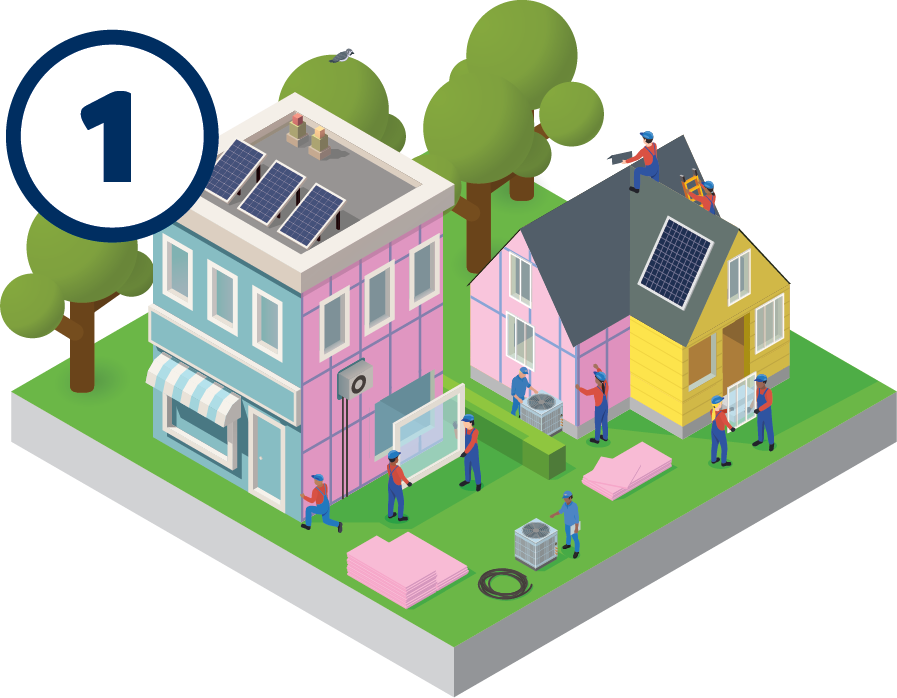 Building retrofits
Building retrofits
To retrofit a building means to improve its energy efficiency and reduce its environmental impact. The most effective retrofit upgrades often include a combination of:
- Replacing or adding insulation
- Sealing or replacing leaky windows, doors, and walls
- Improved heating, cooling and ventilation (HVAC) equipment
- Switching to more efficient lighting
- Adding renewable energy
Why?
Energy use in buildings accounts for 69 per cent of greenhouse gas emissions in Regina. Most of the energy used in buildings is for heating and cooling, and then for electricity to power appliances and devices. Besides reducing energy use and emissions, retrofits can lower utility bills, improve comfort and indoor air quality, and can also generate jobs in the community.
What’s the plan?
The Framework recommends developing deep retrofit programs to make homes and buildings much more energy efficient. When paired with renewable energy such as solar, these programs will have a stronger impact on emissions reductions.
What’s the goal?
Retrofit existing buildings so that they use 50 per cent less energy for heating and cooling, and 10 per cent less electricity. Because older buildings use more energy, retrofitting buildings built before 1981 will have the biggest energy and cost savings. By 2030, 100 per cent of pre-1981 homes should be retrofitted, and by 2035 for all other buildings.
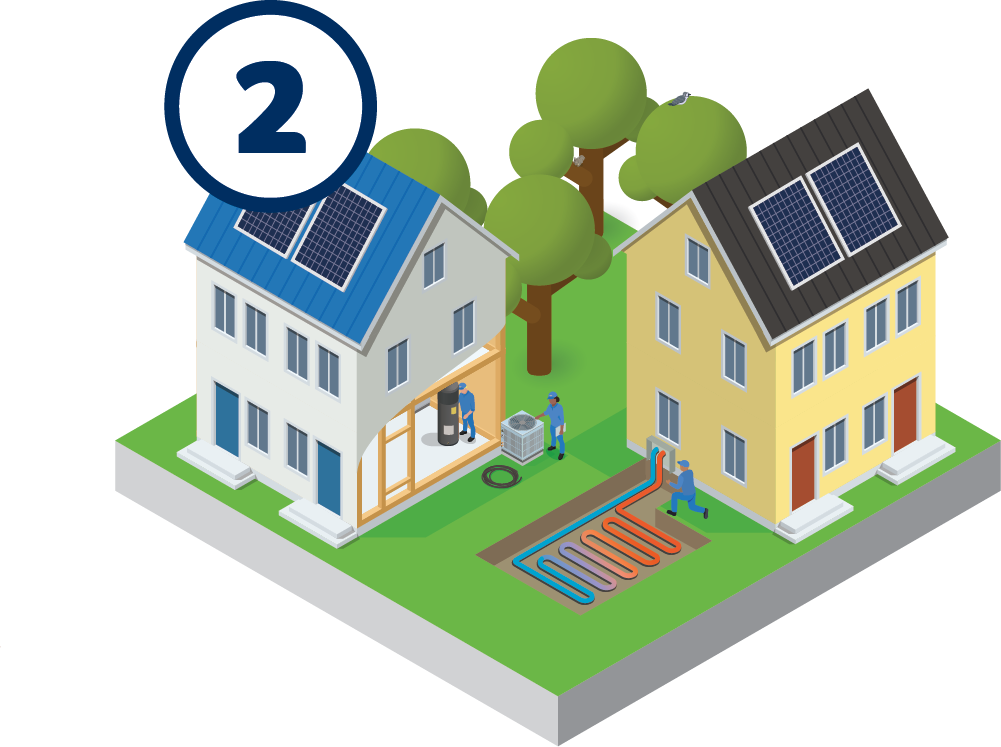 Clean heating
Clean heating
Buildings can be decarbonized by replacing conventional natural gas furnaces with electric heat pumps, which can also provide cooling in summer. Heat pumps are extremely efficient, generating the same amount of heat as natural gas furnaces or boilers using a fraction of the energy.
Why?
In Regina’s homes and buildings, most energy is used for space heating and cooling. Heat pumps are extremely efficient and can be powered by electricity. This means that installing a heat pump in a well-insulated building can significantly reduce the need for energy, and that as more renewable energy – like solar or geothermal – is added to our electricity systems, emissions can also be reduced.
What’s the plan?
The Framework recommends developing fuel-switching programs to move away from natural gas heat through the installation of air-or ground-source heat pumps and highly efficient electric water heaters.
What’s the goal?
To add heat pumps and electric water heaters to 100 per cent of buildings when replacing current systems and to all new building construction. This is an especially impactful change when combined with renewable energy sources and building retrofits.
Leading by example:
The City will show its commitment to this project by installing heat pumps in City buildings and reporting to residents on performance. The City will also make resources available to learn the benefits and feasibility of heat pumps in a cold climate.
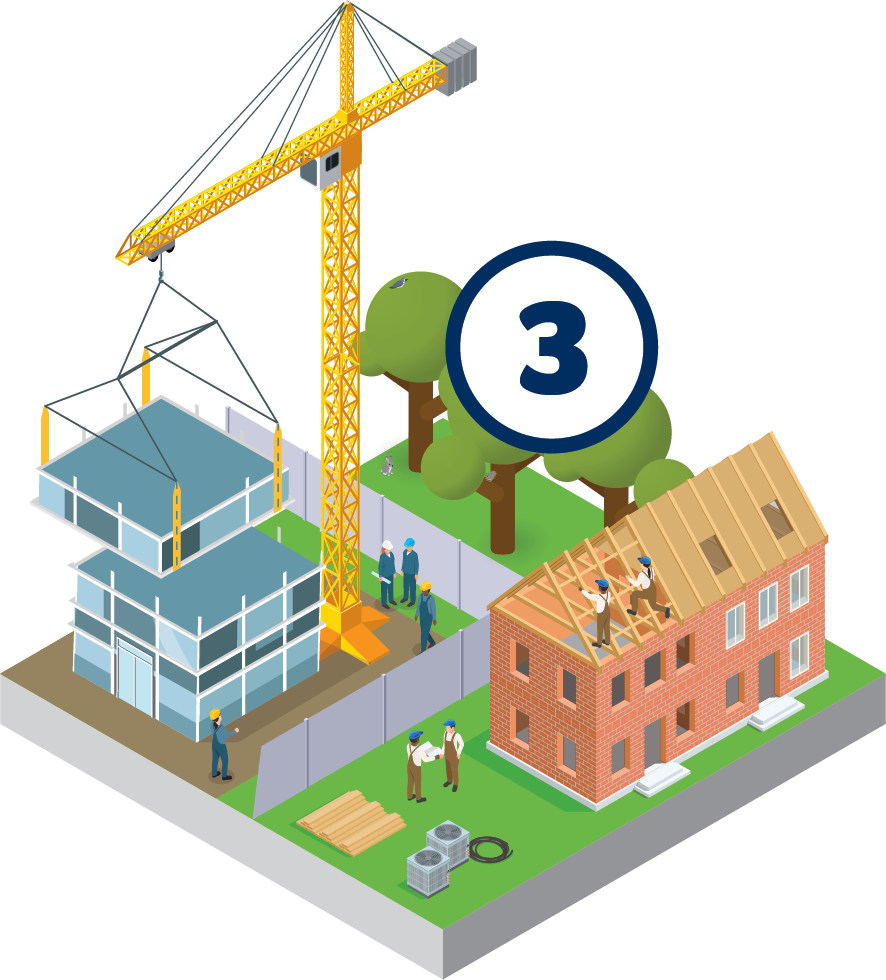 Net-Zero new construction
Net-Zero new construction
All provinces have agreed to adopt the federal Net-Zero Energy-Ready (NZER) Building Code for new residential builds by 2030.
Net Zero Energy (NZE) buildings produce as much clean energy as they use over the course of a year. Net Zero homes and buildings have a well-insulated and air-tight envelope (walls, windows, doors, foundation, and roof), high-efficiency equipment, and good solar orientation to produce renewable electricity.
Why?
Every building that is constructed to a NZE standard is a building that doesn’t need to be retrofitted in the future. All provinces have agreed to adopt the federal Net-Zero Energy-Ready (NZER) Building Code for new residential buildings by 2030.
What’s the plan?
The City can use existing tools and develop new programs or incentives to encourage all new construction to meet net-zero standards.
What’s the goal?
To increase the percentage of new buildings constructed to net-zero standards to 50 per cent by 2026 and to 100 per cent by 2030. All new commercial and industrial buildings will be NZER by 2030, according to the progressive tiers of the National Energy Code for Buildings.
Leading by example:
The City can help to encourage NZE neighbourhoods by reducing regulations, providing financial incentives, or acting as a developer. Low-income and/or social housing can be a major focus of these types of projects. The City will support the development community by providing clarity around regulations, policies, and bylaws that will impact the building sector.
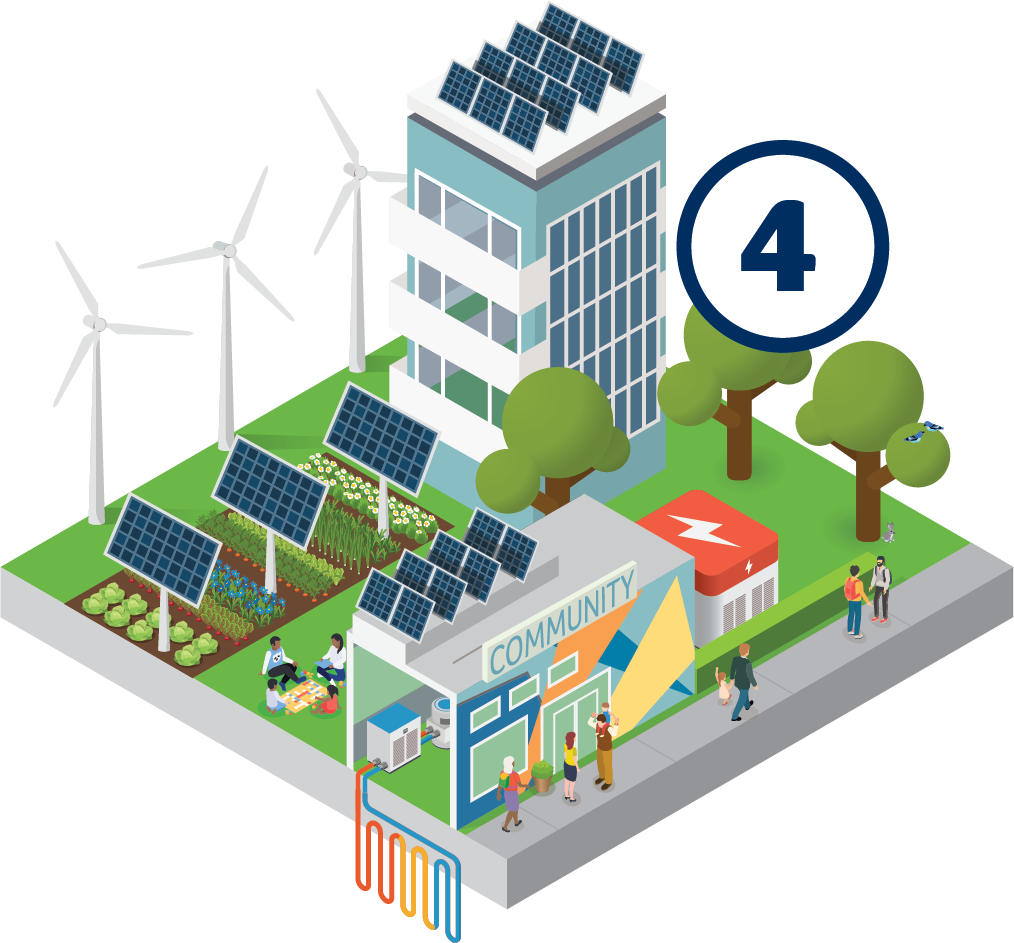 Renewable energy generation
Renewable energy generation
Renewable energy, when combined with energy efficiency measures, can meet much of Regina's energy needs while decreasing emissions. There are many sources of renewable energy, but in the Regina area, solar, wind, and geothermal are the most viable options
Why?
Regina is among the sunniest cities in Canada. The community can harness the abundant energy from the sun and other renewable energy sources such as wind and geothermal to heat, cool, and power our homes, schools, and businesses.
What’s the plan?
To develop programs and partnerships that support solar photovoltaic (i.e. solar panels) installations for buildings, contribute to the creation of solar gardens and wind farms, and explore solar heating from geothermal sources.
What’s the goal?
To generate 50 per cent of buildings’ electricity needs. This can be achieved by installing solar panels on new construction and existing buildings with adequate solar potential, and by building community solar and wind farms for additional generating capacity.
Leading by example:
The City will lead by example by installing renewable energy systems at municipal facilities. Solar panels have been installed at Maple Leaf Pool, Wascana Pool and the Glencairn Neighbourhood Recreation Centre among other City-owned buildings; solar panels are also prioritized for new building construction and any roof replacement projects. The City has used innovation and technology at the Landfill to turn methane gas into power and at the Wastewater Treatment Plant to offset natural gas usage. The City will explore opportunities for partnerships to develop large-scale solar and wind installations and geothermal heating.
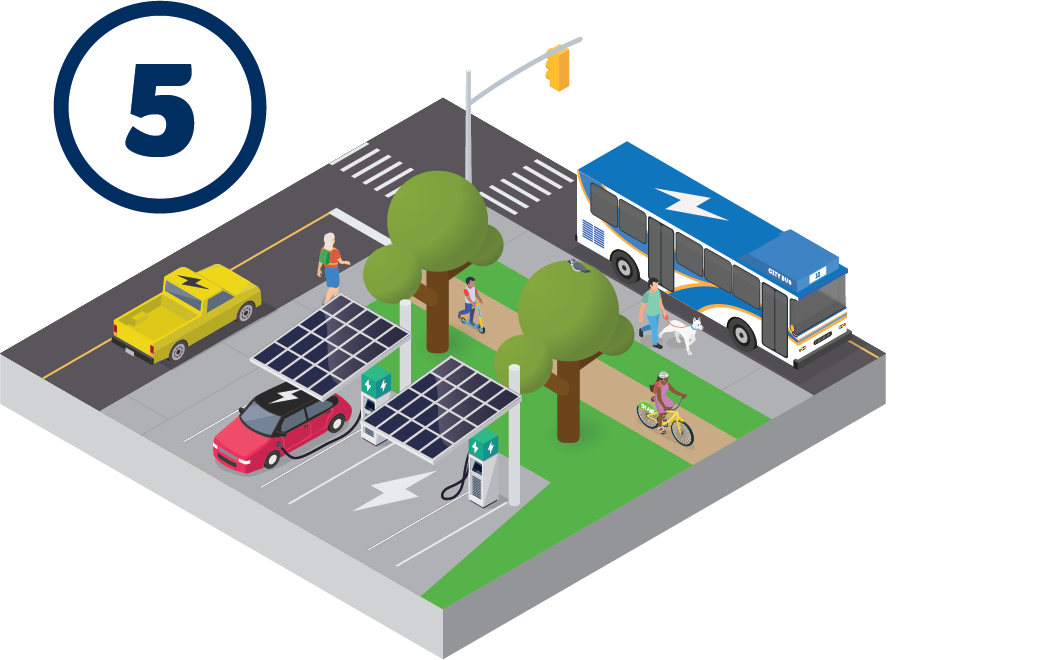 Low-emissions vehicles
Low-emissions vehicles
The future of the vehicle industry is electric vehicles. The federal government has set a target for all sales of personal and light-duty vehicles to be electric models by 2035. The City is developing and implementing strategies to meet this goal.
Why?
Transportation, including both personal and commercial vehicles, accounts for 26 per cent of Regina's energy use. Many residents drive to get to work, run errands and access different parts of the city. By replacing conventional gas and diesel vehicles with electric ones, along with using transit and more active modes of transportation, we can significantly reduce carbon emissions across the entire community.
What’s the plan?
The City can partner with stakeholders to install a network of electric vehicle charging stations and promote awareness about using electric vehicles in cold-weather climates.
What’s the goal?
To reach a target of 80 per cent of new vehicle purchases being electric by 2025, growing to 100 per cent by 2030.
Leading by example:
The City is reducing vehicle emissions in several ways. Using telematics technology, data is being used to improve efficiency of vehicle operation and routing in order to reduce fleet size and fuel usage. By 2030, all light-duty City vehicles purchased will be electric and City transit buses will begin to be electrified in 2024. For medium-duty and heavy-duty trucks, the City will explore electric or hydrogen-powered options, or renewable diesel as a transition fuel.
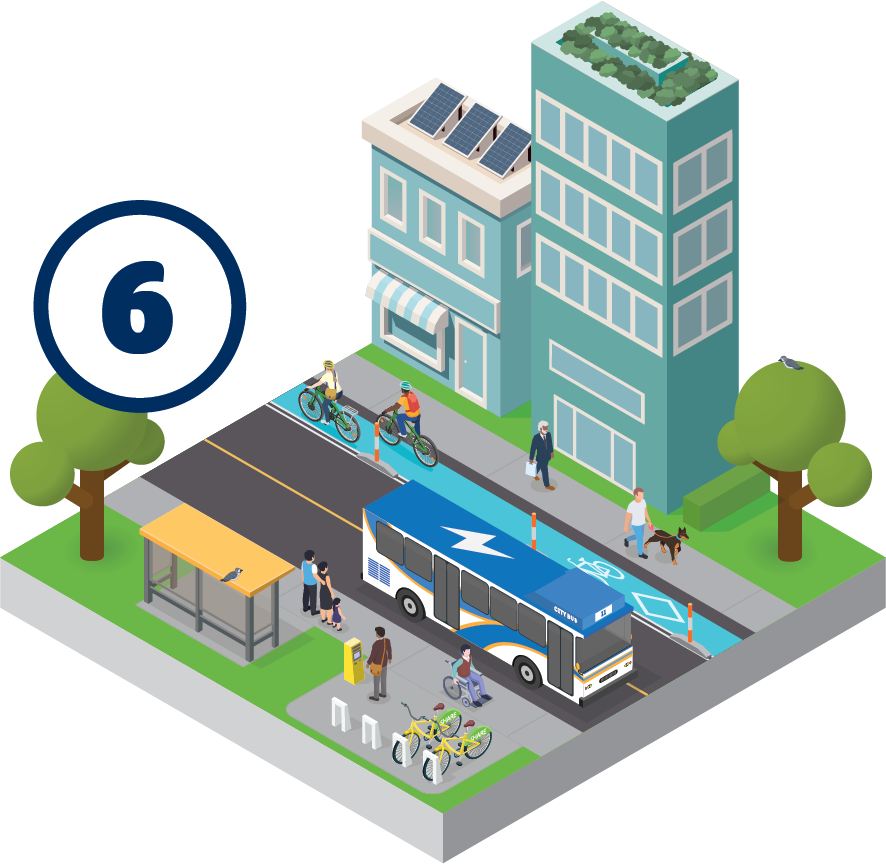 Increase active transportation and transit use
Increase active transportation and transit use
Walking, wheeling and cycling are examples of active transportation. Together, transit and active transportation - along with micromobility like e-bikes and electric scooters – are the building blocks of sustainable transportation networks.
Why?
Transportation, including personal and commercial vehicles, makes up 26 per cent of energy use in Regina. By making it easier for people of all ages and abilities to move around the city using active transportation, transit, and other sustainable modes, we can improve health and community wellbeing while reducing the number of motor vehicles on the road which, in turn, reduces emissions.
What’s the plan?
The City will introduce programs and initiatives that improve and expand public transit and active modes of transportation. An important part of this work will be building safe infrastructure that protects cyclists, pedestrians, and drivers.
What’s the goal?
By 2025, transit will account for 25 per cent of trips within Regina. By 2050, active transportation methods will account for 50 per cent of all short trips.
Leading by example:
City employees will be encouraged to use active transportation and transit for their commute. Active transportation and transit use are already being improved throughout the community. In 2022, City Council approved the Regina Transit Master Plan which guides decision making to make transit a primary mode of transportation and to make our community more accessible and sustainable.
The Transportation Master Plan is under review and proposes dedicated infrastructure for active modes of transportation. The plan will chart a path for creating strong cycling and walking/wheeling networks and increasing the number of people using active modes for commuting to work or school as well as for recreation.
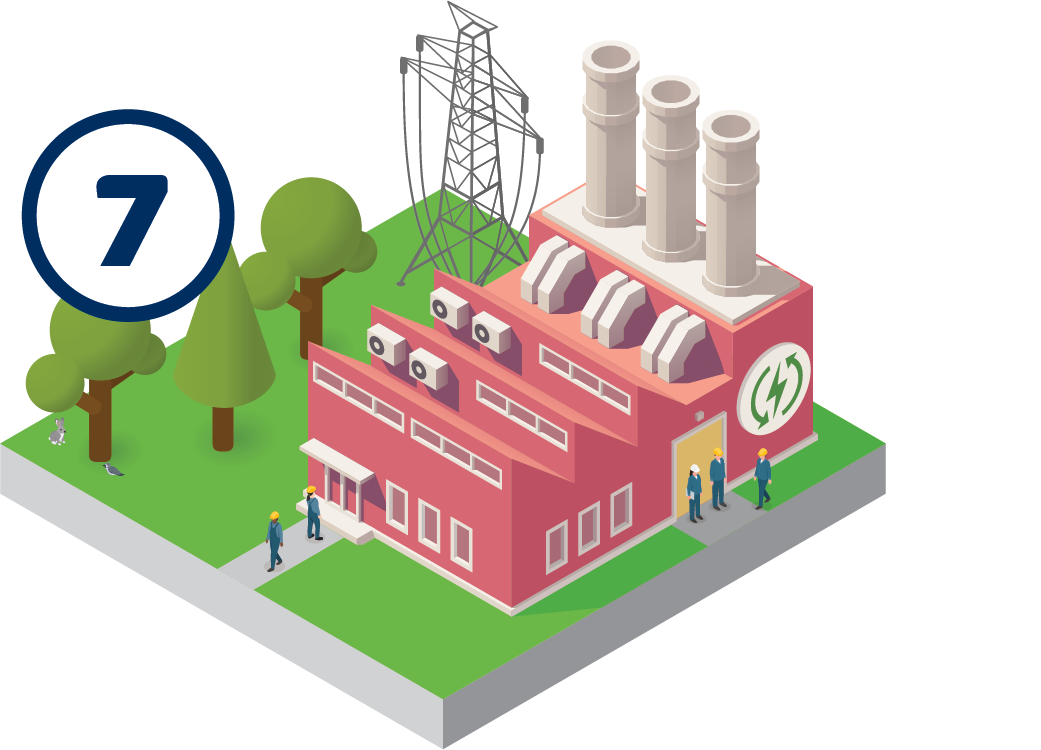 Clean and re-energize industry
Clean and re-energize industry
Currently, the industrial sector accounts for one-third of Regina's emissions. The sector faces some unique challenges but can lower emissions significantly by improving the energy - efficiency of industrial processes, switching to alternate fuels, and transforming the products and services the industry provides.
Why?
Primary industry includes industries that are involved with extracting natural resources from the earth so they can be turned into products used by people. Currently, these industries produce significant emissions while also supporting the community’s economy, for example through employing approximately one percent of Regina’s labour force.
There is an environmental, economic and business case for industry to adapt and not be left behind.
What’s the plan?
The sector can lower emissions significantly by improving the energy- efficiency of industrial processes, switching to alternate fuels like hydrogen and renewable natural gas, and transforming the products and services the industry provides.
What’s the goal?
To increase energy efficiency by 30 per cent and electrify 50 per cent of process heat by 2050. Primary industry will reach net-zero emissions by 2050.
Leading by example:
The City will facilitate advancement in this area by hosting working groups, sharing best practices and publicly showing support for initiatives. The City will bring together industry stakeholders and low-emissions energy providers to determine pilots and paths forward to decarbonize industry.


